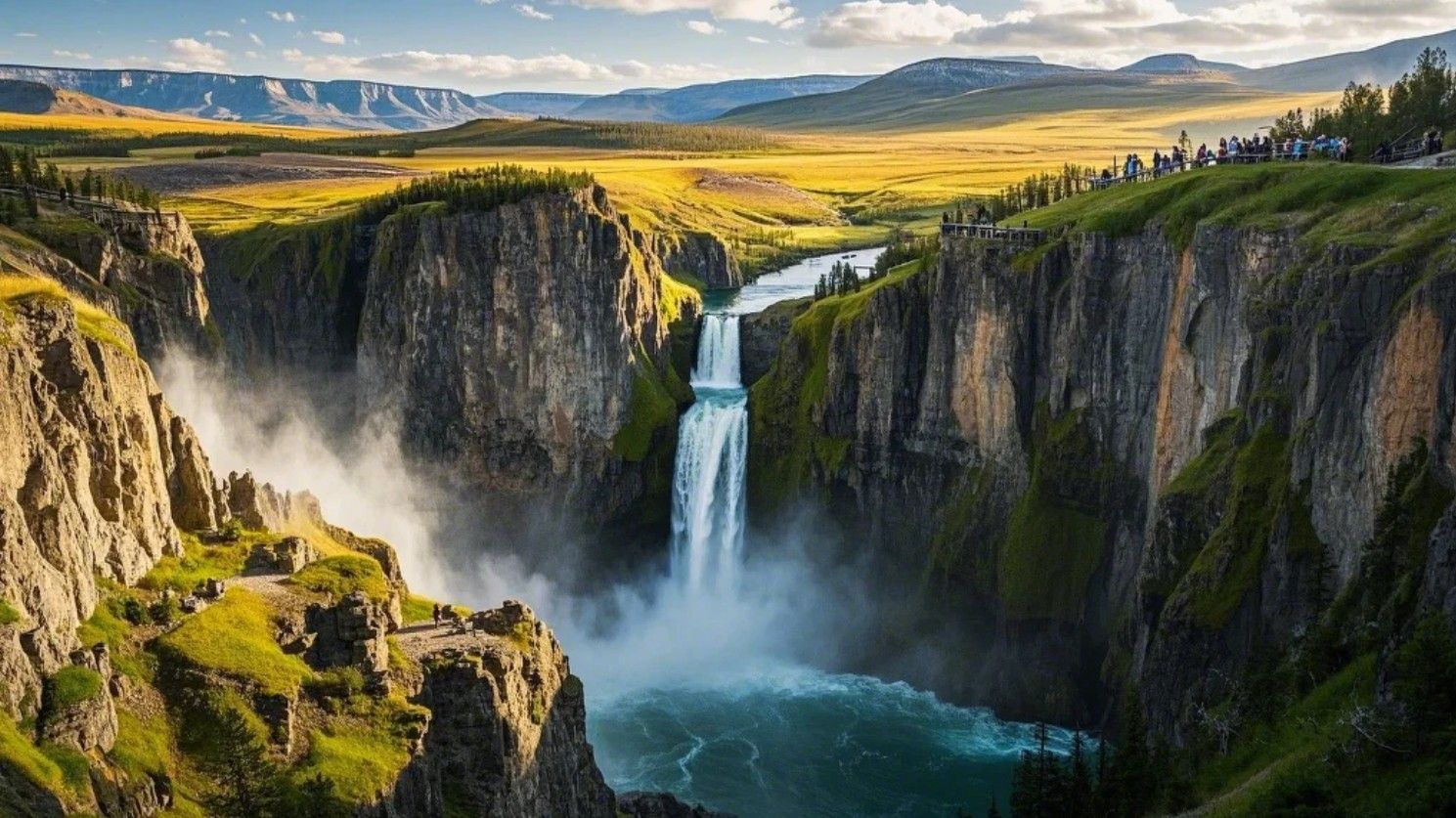Yellowstone National Park: Geysers and Wildlife
| 1. Geothermal Activity by the Numbers 2024 Thermal Feature Survey Results (National Park Service Data)  Feature Count Temperature Range Eruption Frequency Unique Microbe Species Old Faithful 1 204°F (95.6°C) 90-120 minutes 12 Grand Prismatic Spring 1 160-188°F (71-87°C) N/A 37 Steamboat Geyser 1 356°F (180°C) 3-17 days 8 Mud Pots 87 170-200°F (77-93°C) Continuous 5 Case Study: The 2023 Microbe Discovery Scientists identified 3 new thermophilic bacteria species in Grand Prismatic's runoff channels, visible as vibrant orange mats along the boardwalk. 2. Wildlife Watching: Best Times & Locations Animal Spotting Success Rates (Yellowstone Forever Institute Data) Species Best Viewing Area Peak Activity Window Avg. Sighting Duration Population (2024) Bison Lamar Valley 6-9AM 22 minutes 5,900 Gray Wolf Slough Creek Dusk 8 minutes 108 Grizzly Bear Hayden Valley May-June 4 minutes 150 Elk Mammoth Hot Springs September rut 35 minutes 10,000 Real Visitor Experience: The Henderson family recorded 14 wolf sightings during their 5-day August visit by: Using spotting scopes at Slough Creek Joining ranger-led twilight programs Monitoring the Yellowstone Wolf Project's real-time alerts 3. Visitor Impact & Conservation Stats 2023 Park Usage Metrics Metric Annual Total Change vs. 2022 Visitors 4.6 million +9% Search & Rescue Ops 297 +15% Thermal Area Injuries 42 -8% Wildlife Jams 1,844 +22% New 2024 Regulations: $300 fine for drones within park boundaries Mandatory bear spray in backcountry zones Limited entry permits for peak weekends (June 15-August 20) 4. Seasonal Visit Comparison Summer vs. Winter Experience Factor Summer (June-Aug) Winter (Dec-Feb) Avg. Daily Visitors 25,000 1,200 Road Accessibility 100% 3% (snowcoaches only) Lodging Availability 12% vacancy 45% vacancy Photography Conditions Crowded but vibrant Solitary with steam plumes Pro Tip: Winter visitors save 38% on guided tours while experiencing: 92% wolf sighting success rate Frozen waterfall formations Exclusive access to steaming riverbanks 5. Hiking Trail Performance Data Top 5 Trails by Completion Rate (2023 GPS Tracking Data) Trail Length (mi) Avg. Time Elevation Gain Completion Rate Fairy Falls 5.4 2.5 hours 216 ft 89% Mount Washburn 6.8 4 hours 1,400 ft 67% Lamar River 7.2 5 hours 300 ft 58% Mystic Falls 3.5 2 hours 500 ft 92% Avalanche Peak 4.2 5 hours 2,100 ft 31% Safety Note: Trails with <50% completion rates typically require: Bear spray (provided free at all ranger stations) Satellite communicators Early starts (before 7AM) 6. Lodging & Dining Value Analysis Cost Comparison of Overnight Options Option Avg. Nightly Rate Amenities Booking Lead Time Old Faithful Inn $320 Historic charm, geyser views 11 months Canyon Cabins $180 Central location, basic comforts 6 months Grant Village $210 Lake access, restaurant 8 months Campgrounds $35 Bear boxes, shared facilities 14 days (online) Backcountry Permit $5 Complete solitude 48 hours (walk-up) Money-Saving Hack: The "Yellowstone Triplex" strategy:  Book 1 night at Old Faithful Inn 2 nights at Canyon Cabins 2 nights camping Saves $420 vs. 5 nights at premium lodges Key Takeaways for 2024 Visitors Geothermal Viewing: Arrive at Grand Prismatic by 7:15AM to avoid the 87% midday visitor surge Wildlife Success: Lamar Valley at dawn offers 3x more wolf sightings than other areas New Tech Tools: Download the NPS app for real-time geyser predictions and wildlife alerts Hidden Gem: The 2.3-mile Artists' Paint Pots trail features 4 thermal types with 90% fewer visitors than Midway Basin "Yellowstone rewards those who respect its rhythms. The best experiences come from patience, not checklists." — Sarah Thompson, 12-year park ranger |
wendy
|
2025.03.21




